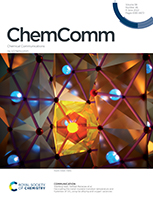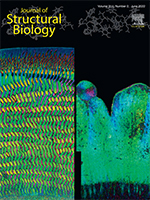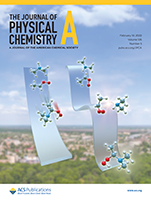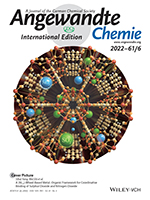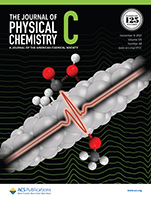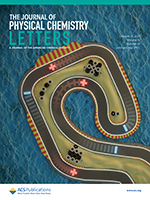ALS senior scientist Jinghua Guo is the recipient of this year’s Shirley Award for Outstanding Scientific Achievement at the ALS. Guo is being recognized for pioneering the development of operando soft x-ray spectroscopy, work that’s enabled studies under realistic conditions, which is of great importance in environmental and energy research. Read more »
Designer Materials to Keep Plastic Out of Landfills
Scientists have designed a new material system to overcome one of the biggest challenges in recycling consumer products: mixed-plastic recycling. Their achievement will help enable a much broader range of fully recyclable plastic products and brings into reach an efficient circular economy for durable goods like automobiles. Read more »
Decoupling the metal–insulator transition temperature and hysteresis of VO2 using Ge alloying and oxygen vacancies
The VO2 metal–insulator transition underpins applications in thermochromics, neuromorphic computing, and infrared vision. Ge alloying is shown to expand the stability of the monoclinic phase to higher temperatures, and by suppressing the propensity for oxygen vacancy formation, renders the hysteresis of the transition exquisitely sensitive to oxygen stoichiometry. Read more »
Biomineralization: Integrating mechanism and evolutionary history
In this review, Gilbert et al. develop a model for calcium carbonate biomineralization applicable to all phyla. Their model may help elucidate the key genetic components that drive biomineralization and offers insight into the consequences of global climate change on marine organisms. Read more »
Loss of biological control of enamel mineralization in amelogenin-phosphorylation-deficient mice
Amelogenin phosphorylation plays crucial roles in controlling structural, crystallographic, mechanical, and compositional characteristics of dental enamel. Thus, loss of amelogenin phosphorylation leads to a reduction in the biological control over the enamel mineralization process. Read more »
Dramatic Conformer-Dependent Reactivity of the Acetaldehyde Oxide Criegee Intermediate with Dimethylamine Via a 1,2-Insertion Mechanism
Acetaldehyde-oxide (CH3CHOO) is an atmospherically pertinent reactive intermediate that exists in syn (right) and anti (left) conformational forms. Experiment and theory reveal that the reaction of anti with dimethylamine is several orders of magnitude faster than that of syn with dimethylamine, despite both reactions being energetically downhill. Read more »
A {Ni12}-Wheel-Based Metal–Organic Framework for Coordinative Binding of Sulphur Dioxide and Nitrogen Dioxide
SO2 and NO2 are important air pollutants, and understanding the mechanism of capture materials drives the development of new clean-up technologies. In situ synchrotron x-ray crystallographic and spectroscopic experiments were used to establish a detailed molecular mechanism consisting of reversible coordination of SO2 and NO2 at the six open NiII sites on the unprecedented {Ni12}-wheel of a robust metal–organic framework material at crystallographic resolution. Read more »
Atomic-Scale Insights into Nickel Exsolution on LaNiO3 Catalysts via In Situ Electron Microscopy
In situ electron microscopy provides atomic-scale insight into the dynamic structure evolution of LaNiO3 perovskite during vacuum heating. This research established a sequential two-step process in the decomposition of LaNiO3 and gives evidence of the diffusion pathway for the lattice oxygen released during the perovskite decomposition. Read more »
Direct Observation of Surface-Bound Intermediates During Methanol Oxidation on Platinum Under Alkaline Conditions
A comprehensive mechanism for the methanol oxidation reaction (MOR) in alkaline media is presented, and it is shown that the MOR proceeds via two different pathways (via COad or H3C–Oad intermediates). The latter dominates the overall MOR current, suggesting that the H3C–Oad oxidation could be a viable pathway to accelerate the MOR in alkaline systems. Read more »
Interface Sensitivity in Electron/Ion Yield X-ray Absorption Spectroscopy: The TiO2–H2O Interface
To understand corrosion, energy storage, (electro)catalysis, etc., obtaining chemical information on the solid–liquid interface is crucial but remains extremely challenging. Here, x-ray absorption spectroscopy is used to study the solid–liquid interface between TiO2 and H2O. This result highlights the potential of electron-yield XAS to obtain chemical and structural information with a high sensitivity for the species at the electrode–electrolyte interface. Read more »
- « Previous Page
- 1
- …
- 3
- 4
- 5
- 6
- 7
- …
- 13
- Next Page »


